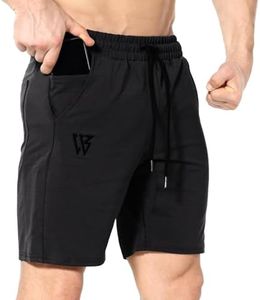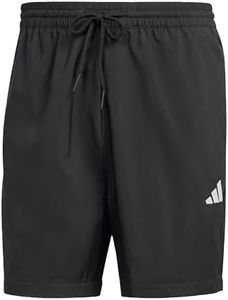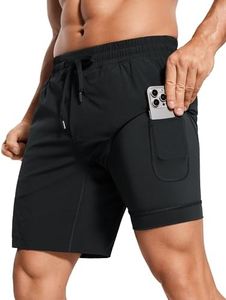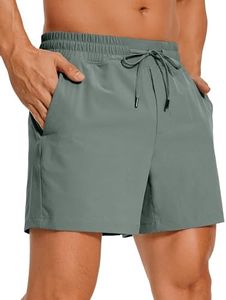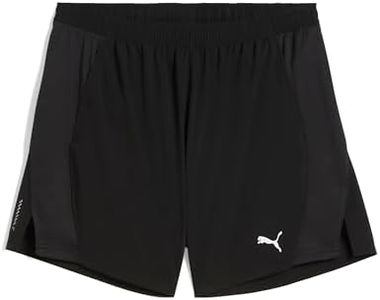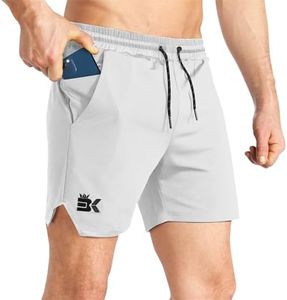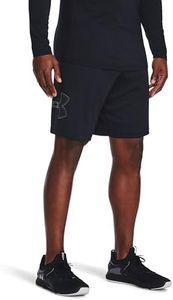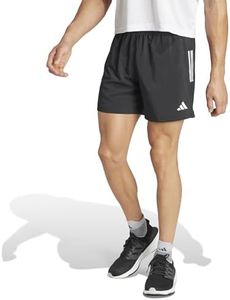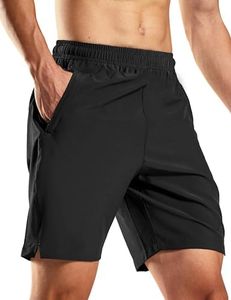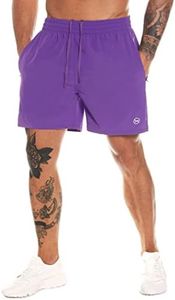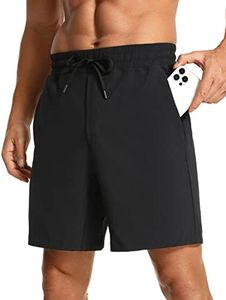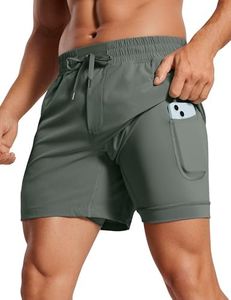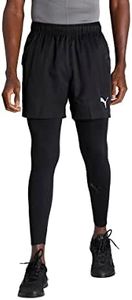We Use CookiesWe use cookies to enhance the security, performance,
functionality and for analytical and promotional activities. By continuing to browse this site you
are agreeing to our privacy policy
10 Best Running Shorts For Men
From leading brands and best sellers available on the web.Buying Guide for the Best Running Shorts For Men
Choosing the right running shorts can make a big difference in your comfort and performance while exercising. The ideal pair will keep you cool, prevent chafing, and allow you to move freely. When shopping, think about where and how you plan to run, for how long, and what features will make you feel most comfortable during your workouts.LengthShorts length refers to the measurement from the waistband down to the end of the leg, usually in inches. This is important because it affects how much freedom of movement you have and how much of your legs are covered. Shorter shorts (3-5 inches) are great for speed and minimal coverage, often preferred by competitive runners. Mid-length shorts (5-7 inches) balance freedom and modesty, making them versatile for most runners. Longer shorts (7-9 inches or more) offer more coverage and are good if you prefer extra modesty or need protection from the sun or chafing. Your choice depends on your comfort level and the kind of running you do—faster, race-focused runners generally prefer shorter lengths, while longer may suit those who favor versatility or more coverage.
Fabric MaterialThe material of your running shorts impacts breathability, moisture control, and overall comfort. Most running shorts are made from synthetic materials like polyester or nylon, which wick sweat away from your body and dry quickly, helping to reduce chafing. Some may include spandex for extra stretch. Cotton shorts are less ideal because they hold onto moisture and can feel heavy. If you sweat a lot or run in hot climates, prioritize moisture-wicking fabrics. If you prefer a snugger fit or lots of movement, look for materials with added stretch.
LinerA liner inside running shorts acts like built-in underwear, providing support and helping to prevent chafing. Liners are usually made from soft, breathable fabric. Some runners appreciate the convenience and comfort of a lined short, especially for longer runs where minimizing friction is key. Others prefer unlined shorts so they can choose their own underwear. Choose lined shorts if you value simplicity and fewer layers. If you want more flexibility in support or already have a favorite running underwear, consider unlined options.
PocketsPockets are useful for carrying essentials such as keys, a phone, or energy gels during your run. Some shorts have zipper pockets for security, while others may have open or hidden pockets for easy access. Consider how much you usually need to carry and if you want things tightly secured or just quickly accessible. For short runs with minimal carry, a small pocket may suffice; for longer outings, look for shorts with multiple or secure pockets.
WaistbandThe waistband is what keeps your shorts snug around your waist. Some running shorts have elastic waistbands, some drawstrings, and others combine both. A secure, comfortable waistband will prevent your shorts from sliding down or feeling too tight. If you want adjustability, look for a drawstring. If you want simplicity, an elastic band may suffice. Think about how your shorts stay in place during movement—pick what feels most secure and comfortable to you.
FitFit describes how loose or tight the shorts are on your body. Some people prefer a relaxed fit for more airflow and comfort, especially during casual runs. Others like a more athletic, close-to-body fit to avoid fabric flapping or getting in the way during intense workouts. Base your decision on your personal style and the type of running you do. For speed work, a tighter fit might be better; for longer, slower runs or comfort, go looser.
